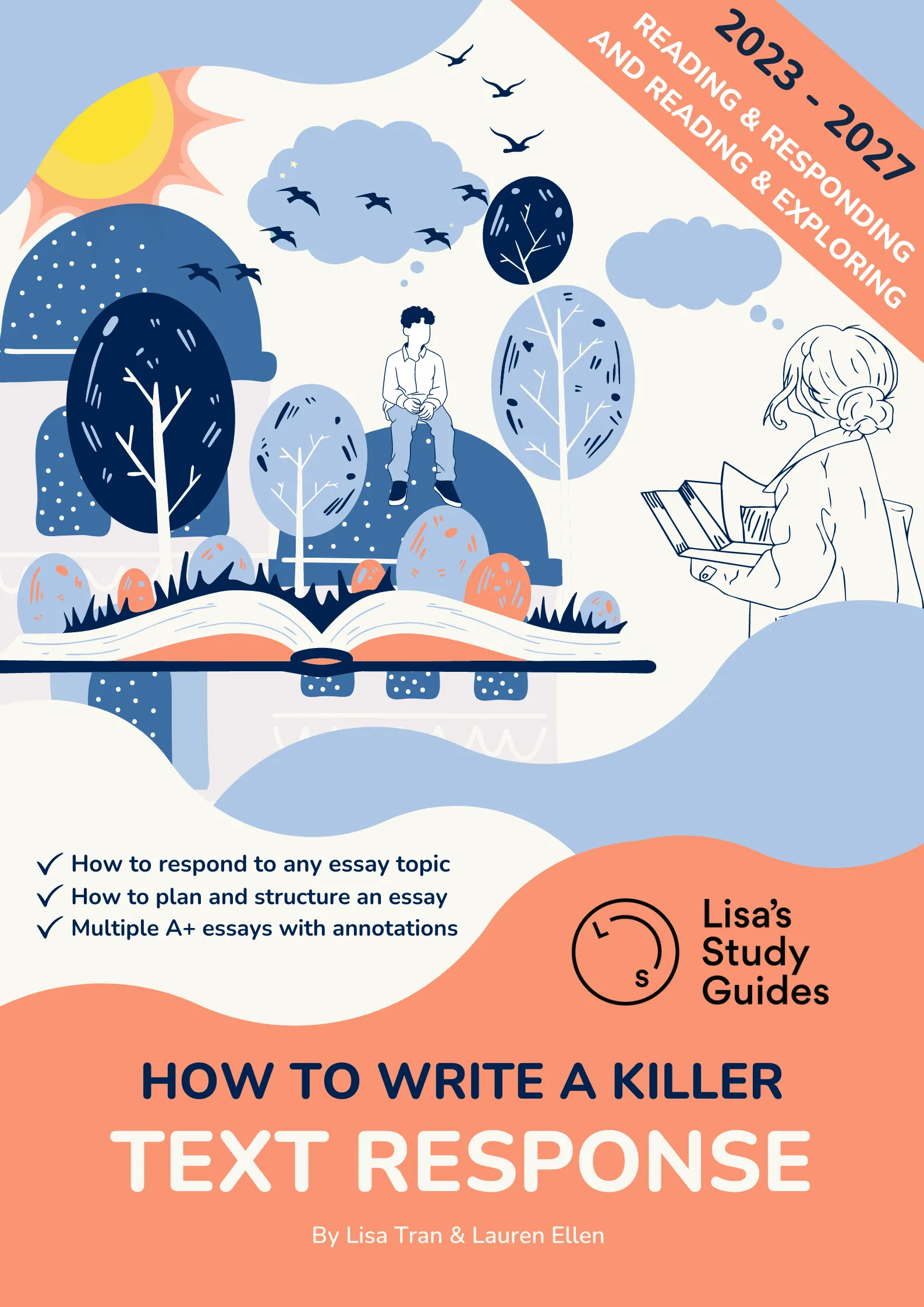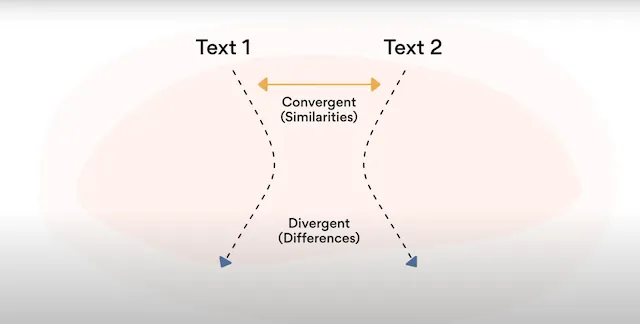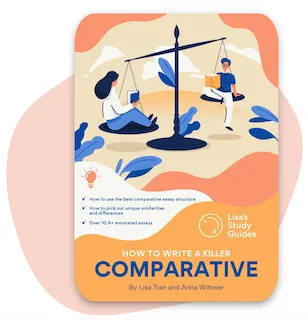Contents
1. Summary
2. What Is Magical Realism?
3. Themes
4. Symbols and Analysis
5. Quotes
6. Sample Essay Topics
7. Essay Topic Breakdown
1. Summary
Flames is a bit of an out-there story right from the beginning: Levi is attempting to build a coffin for his sister Charlotte because the women in their family come back to life after dying. Neither of them is that close to dying - both are young adults. Charlotte doesn’t really want a coffin so she runs away from home, as far as she can while still remaining in Tasmania at least, and Robbie Arnott takes us on this adventure through interweaving perspectives and rich imagery of his home island.
Some of these perspectives are surprising and unexpected, ranging from a hardcore private investigator to a river god in the form of a water rat, but each of them earns their place in the story. Our job when studying this text is to follow these shifts in perspectives and make sense of how they contribute to the overall text. If you’re writing creatively, you may want to play around with this sort of structure as well in your piece.
2. What Is Magical Realism?
Before we get stuck into the text itself, it might be useful to first discuss its genre. Magical realism books tend to be extremely confusing if you’re not familiar with the genre (and sometimes even when you are!). This is because authors in this genre will typically set their stories in the real world (in this case, in Tasmania), but they’ll add supernatural elements, which vary wildly from story to story.
Let’s unpack the genre a bit more, in particular, what it involves and why it’s used.
Elements of Magical Realism
The most important element of magical realism is that it blends the real world with fantastical elements. In Flames, the most obvious example is gods: gods don’t exist as far as we know, but they walk among humans and play key roles in this text. Less obvious examples of fantastical elements include the wombat farm at Melaleuca (fortunately nobody actually skins wombats) as well as the Oneblood tuna and (unfortunately!) the pet seals.
The fact that these examples are narrated as perfectly normal is another element of magical realism: the author usually operates as if the fantastical elements are perfectly real. We, as readers, enter a world where the existence of these magical things is taken for granted by the characters.
Purpose of Magical Realism
This blurring of the lines between real and magical is primarily supposed to suspend our disbelief: we can’t really be sure what’s real about the novel’s world and what isn’t. All we know is that in many respects, it looks like our own. Within this familiar setting, Arnott lets his own imagination run wild and leaves the reader to figure out the rest. This helps to create a sense of wonder, as if these elements could be real and as magical as described.
These elements also contribute to the story in other ways: in particular, they open up new possibilities for commentary. For example, the voice of the South Esk god is used to highlight the impacts of colonialism and the “blood-tasting tang of iron” that was brought with it.
Other Magical Realism Books
If you’re liking the sound of this genre and/or if you enjoyed Flames, there’s plenty more to discover in the way of magical realism. It’s a hallmark of Latin American literature (Isabel Allende, Gabriel García Márquez), and it’s also been picked up in Japan by the likes of Haruki Murakami. A prominent Australian example is Carpentaria by Alexis Wright.
3. Themes
Death and Grief
Let’s move more closely into Flames, starting with its central theme of death and grief. It’s what defines this central point of tension between Levi and Charlotte throughout the novel, since it starts with their divergent responses to their mother’s death (and reincarnation etc.). Their divergent responses suggest that there’s no one way to cope with death, and their father’s reaction on top of that introduces further complexity: he disappears from their lives altogether, “not want[ing] to be close to them when they [died]”. Between the three of them, there are three very different expressions of grief.
But Edith McAllister is not the only death of significance in the novel. Another standout is the passing of Karl’s seal, after which he becomes haunted by “clicks”; he subsequently leaves tuna-hunting behind. The death of the South Esk god is also explored as causing grief, this time in the form of divine emotional outpouring, “a cloud’s sorrow”. Arnott is thus exploring many processes of grieving, from solitude and callousness to physical and emotional labour.
Family Relationships
Outside of these moments of grieving, Arnott explores the background relationships between family members as well. Again, Levi and Charlotte are central to this. As siblings, they don’t always see eye to eye: “Levi and I have never understood each other”. However, that does not diminish their love for each other, particularly as they were left alone after their mother’s death. Their father Jack again makes this dynamic more complicated: he sees an “unbridgeable gap” between himself and Levi for example, but the omniscient third-person narrator in that chapter knows otherwise. Consider what difference it makes when Arnott writes in first person from within these relationships (as he does with Charlotte) versus when he writes in third person, observing from outside.
We also see interesting relationships between Karl and his daughter Nicola. Unlike the McAllisters, the two of them are remarkably close despite his ongoing grief for his seal: “nothing could match the blaze of love in her father’s smile”.
Romantic Relationships
Nicola crops up again under this theme, as she begins to navigate a relationship with Charlotte. In a book review for The Guardian, Sam Jordison argues that this is a bit trite, but we can think of it as one perspective on how relationships begin: organically and sincerely, and out of a desire to protect someone else. By contrast, the start of Jack and Edith’s relationship was founded on something more artificial and manipulative, a “tiny spark” which he ignited in her mind.
This is bookended with romantic relationships that have come to an end, as explored through the eyes of the private investigator: her and her ex-husband, Graham Malik, have settled into something of an “ecosystem”. With these various beginnings and endings, Arnott shows how it can be natural - or supernatural - to fall in and out of love.
Colonisation
Finally, this novel touches on the impacts of colonisation. It’s a few quiet allusions here and there, but they are important: Arnott acknowledges the impact of colonisation on the natural landscape of his birthplace. He does this firstly through the eyes of the South Esk god, who observes the “foul industries” of the “loud, pale apes” when they first arrived on palawa and pakana land, the land we now know as Tasmania.
Arnott also explores colonisation through the eyes of Jack, who experiences racism when taking on the human form of an Aboriginal person. He wanted to learn more about how European colonisers were using fire, but he found “they reacted poorly to his dark appearance”. Meanwhile, First Nations people in Tasmania were being “hunted in their own homeland”, and he chooses not to intervene.
As immortal outside observers, their perspectives are the only ones in the novel that can really trace this history. Arnott might be including them so readers take his descriptions of nature with a grain of salt: even as we appreciate Australia’s beautiful landscape, it’s worth acknowledging its custodians who have kept it that way for tens of thousands of years.
4. Symbols & Analysis
Supernatural Creatures
We’ve traced the major purposes of these deities already, but to reiterate them here these ‘gods’ symbolise different parts of nature and the wonder Arnott derives from them. Although nature is already alive, these figures help it feel even more so. They also serve the important purpose of highlighting and acknowledging Tasmania’s colonial history, as well as the disconnect between humankind and nature.
Water
The one natural element worth discussing as its own symbol is water. There are many bodies of water identified in the novel, from rivers and lakes to the ocean, and they each have their own significance. For example, rivers connect parts of the natural landscape while lakes (particularly Crater Lake) represent a getaway, solace, solitude and peace.
The ocean is the most complex of these symbols though: it’s all around the island of Tasmania, and it appears to be a vicious and unforgiving place filled with orcas and tunas the size of “mountains”. But it’s also a place that brings calm to Edith and Charlotte, and even Levi as a child. Arnott canvasses all of these different relationships to nature through the different manifestations of water. Water even exists as rain, which in the novel’s denouement represents a new beginning, a washing away of past tensions and conflicts.
5. Quotes
Levi
- “My sister is struggling to cope with the loss…I cannot allow her pain to continue.”
- “They (Levi and Jack) were so alike”
Charlotte
- “The tears were flames, and they were coming from within Charlotte.”
- “Levi and I have never understood each other”
Gods
- “Some wore fur and feathers and watched over the creatures they resembled… Some, like a blood-hungry bird spirit he encountered deep in the southwest, were cruel. Most were calm, seeking only to care for the creatures and land that they felt drawn closest to.”
- “He (the South Esk god) continued on, soothing his rage in a simple, humble way - by nipping screws out of the hull of an idle jetski”
- “Living with humans did not work”
6. Sample Essay Topics
- More than anything else, Flames illustrates the importance of family. Discuss.
- Levi McAllister is the hero of Flames. Do you agree?
- How does genre contribute to the storytelling effect of Flames?
- What is the effect of shifting narrative perspectives as used in Flames?
- “I could have spoken to him but he would not have listened.” What does Arnott say around family?
7. Essay Topic Breakdown
Whenever you get a new essay topic, you can use LSG’s THINK and EXECUTE strategy, a technique to help you write better VCE essays. This essay topic breakdown will focus on the THINK part of the strategy. If you’re unfamiliar with this strategy, then check it out in How To Write A Killer Text Response.
Within the THINK strategy, we have 3 steps, or ABC. These ABC components are:
Step 1: Analyse
Step 2: Brainstorm
Step 3: Create a Plan
How does genre contribute to the storytelling effect of Flames?
Step 1: Analyse
When talking about the genre of this text, we’ll definitely need to discuss magical realism. The question here is about how magical realism enriches or contributes to the story, so it might be worth breaking down the elements of magical realism and thinking through each of them one-by-one. The fact that this prompt is framed as a ‘how’ question (one of the 5 types of essay questions) also means we’ll have to bring in Arnott and how he chooses to tell the story.
Step 2: Brainstorm
One magical realism element Arnott adopts is the gods, who play a few roles symbolically in the novel, but there are other elements too: the seals, the flames, the cormorants and so on. Do these elements add as much as the gods, and if so, what are they adding?
Consider also not just the elements as they appear, but also how Arnott is treating them. The fact that a lot of them are taken for granted as perfectly normal is in itself another genre element.
Step 3: Create a Plan
Instead of talking about the elements too disparately or separately, I think a lot of them revolve around this central question of how humans relate to the earth and to one another. This will help connect my ideas to one another.
Paragraph 1: Elements of magical realism show how humans adversely impact nature
- Nature is a huge part of the story: around the island, we see everything from beaches and rivers to “undulating moorlands of peat and buttongrass”. Sometimes, these elements are personified as deities (e.g. South Esk god) – this is where genre comes in, since these deities are supernatural or ‘magical’, though they are written to exist in our world.
- These voices, made possible by magical realism, highlight the impact of human industry on the environment: for example the “blood-tasting tang of iron” that seeps into Tasmania’s waterways.
- Even Jack and Edith’s relationship could be seen as a metaphorical take on our incompatibility with nature: “living with humans did not work”.
Paragraph 2: At the same time, not all humans contribute equally to this pollution, and magical elements also facilitate commentary on this perspective
- Before European colonisers arrived in Australia, the land had been tended to by the First Nations peoples for over 60,000 years - and pollution had been minimal. We cannot blame the entire human race equally for the deteriorating natural environment (see this Instagram post for an explanation!).
- This is pointed out by the South Esk god: it is the “pale apes” who are trying to “swamp[] over everything”.
- Jack, the deity of flame, also recognises this, although he is far more complicit: “he liked learning from the pale people more than he wanted to help” Aboriginal people.
- Magical realism adds this historical and political dimension to the narrative.
Paragraph 3: However, Arnott’s use of magical realism also shows possibilities for ‘ideal’ relationships between humans, and between humans and nature
- This paragraph gets to draw on some examples that aren’t just the deities: the seals for example coexist really poetically with humans, “the half of themselves they had been born without” (these were inspired by dogs, by the way).
- Plus, even though Jack and Edith’s relationship was founded on a lie, Arnott is able to use that as a point of contrast for the relationship between Charlotte and Nicola, born from Nicola’s “desire to help”, plus her “fast and firm” attraction to Charlotte. This relationship is highly organic, and the ‘magical’ relationship between Charlotte’s parents proves a useful foil.
- Even though some textual elements are exaggerated because of genre, Arnott still manages to use magical realism to highlight what might be possible, inviting the reader to imagine possibilities for harmony between people and nature within their own worlds.
Flames is usually studied in the Australian curriculum under Area of Study 1 - Text Response. For a detailed guide on Text Response, check out our Ultimate Guide to VCE Text Response.


















.jpg)